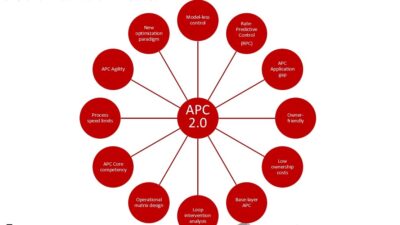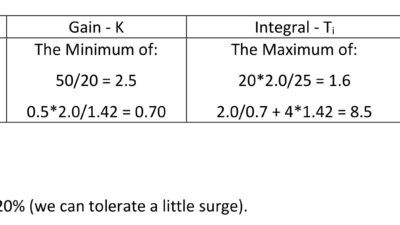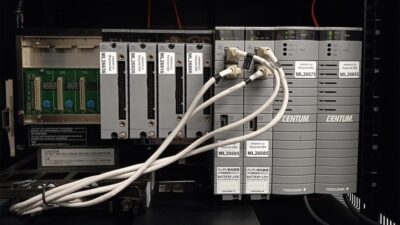Given that I/O devices tie together all elements of a control network, primary buying considerations are pretty basic: Does the I/O equipment support the fieldbus protocols and signal types needed? That sounds simple, but there's a dizzying array of possible protocols and signals to consider. There's also the question of I/O intelligence to bear in mind, as well as a number of other factors, su...
|
Given that I/O devices tie together all elements of a control network, primary buying considerations are pretty basic: Does the I/O equipment support the fieldbus protocols and signal types needed? That sounds simple, but there’s a dizzying array of possible protocols and signals to consider. There’s also the question of I/O intelligence to bear in mind, as well as a number of other factors, such as I/O granularity and type, wiring concerns, size, and ratings. All of these play a part in determining the appropriate I/O configuration and its cost.
Don’t get lost in the Ether
When it comes to fieldbuses and protocols, choices abound. Common control networks include various types of industrial Ethernet, Profibus, Modbus, FOUNDATION Fieldbus, DeviceNet, Interbus, and many others. Most network technologies support several communication protocols. Ethernet-based control networks can use Modbus/TCP, Modbus/UDP, EtherNet/IP, and others. Some I/O products support multiple protocols. However, if multiple levels of communication are not needed in your application, money can be saved because supporting multiple protocols adds cost to the I/O devices.
What can’t be avoided, at least for most new installations, is Ethernet itself. Because of the need to communicate more information into and out of the factory floor, Ethernet has quickly become an accepted industrial communication standard. “We still sell a ton of hardware that communicates over serial communication using RS-485, but very clearly, the largest part of what we’re doing now and most of our growth is in the area of Ethernet,” said Tom Edwards, senior application engineer with I/O supplier Opto22.
As for I/O signal types, the mix available to buyers varies widely, including analog and digital, along with special functions, such as counters, and others. Modules that provide a combination of analog inputs and outputs, and discrete I/O channels can save money and space. Costs vary with configuration of the module, if an enclosure is needed and what type, and the number and nature of I/O channels. Discrete I/O costs run a third or less than the cost of analog inputs. But outputs can be twice as expensive as analog inputs. Cost for special functions, such as frequency/pulse counters, can be double that figure again.
Whatever the price, the channel has to handle the input. Isolation is another important performance consideration because it helps prevent ground loops, reduces noise, and protects equipment. Depending on the application, there may be a need to isolate individual channels within the I/O gear from each another. At a minimum, the I/O elements should be isolated from the network and power supply with a rated standoff of 1,500 V ac protection for a minute or so.
Adding IQ
The advent of Ethernet and the continued drop in the price of semiconductors has also lead to increased use of remote, intelligent I/O devices. It only costs $300 or so to add 16 MB of memory and a high-speed processor to a multipoint digital and analog I/O device, with no impact on the system’s footprint. The impact is strictly on performance, particularly when the network as a whole is considered. Adding intelligence can allow information to be processed locally, thereby reducing the amount of network traffic. A greater degree of I/O-based processing can make a system more tolerant of communication failures. It also can make the system more forgiving of problems with a centralized computer. Depending on design and application needs, a distributed system also can result in better performance as the overall system grows—because the intelligence is not centralized, there isn’t a single chokepoint where limited resources can slow everything down. Controllers built into such intelligent I/O modules can perform PID control, batch control, or alarming. A trend in such controllers is use of HTML pages for configuration, which allows a standard Web browser, with appropriate security, to set operating parameters from anywhere in the network.
Distributed I/O systems can communicate with the operator when it or a connected field device is malfunctioning. Alerts can be locally indicated and transmitted to a remote location. When information is displayed clearly and in a common format across a product family, training, installation, and down time can be reduced. It’s also possible to use intelligent I/O devices to expand legacy programmable logic controller (PLC) systems and extend the usefulness of an existing investment by enabling an installed PLC to continue to be effective.
However, these advantages have to be weighed against the increased cost. If extra capabilities aren’t needed, a less expensive solution should be considered.
Odds and ends
Remaining considerations for buying I/O modules have to do with such factors as device size, external enclosure size (if the application requires one), type of wiring, and type of connection. Remote I/O devices can be all-in-one bricks with bus couplers, power supplies, and 12 to 36 I/O channels. Enclosures can also be modular, with components separated from one another. A final option is a mini-block, which is similar to the all-in-one bricks but with only 2 to 16 channels. Bricks can be the most compact and least expensive solution, provided there’s a need for many I/O channels. The modular approach is more flexible, but it costs more for use in smaller systems and has a larger footprint. Mini-blocks tend to work best for smaller point count applications.
I/O wiring can be pluggable or fixed, with the former allowing for pre-harnessing of connectors while the latter requires wiring to be done on assembly. Connections can be of the screw type or via a spring pressure device, with the latter said to offer reduced wiring time and fewer wiring errors. Another factor to consider is how channels are added. This can be done in a modular format, where some 16 or so channels are added at a time. A competing tactic is to use a more granular approach, which allows two, four, or eight channels to be added. The granular method can be more cost effective, given the right situation.
Last—but by no means least—are ratings. If the system is to be used in a marine environment, then the I/O modules must have the appropriate approvals from such bodies as the American Bureau of Shipping. If the system is to be used in a hazardous location, such as a petrochemical plant, then it should have Class I, Div. 2 or other suitable ratings, depending on location.
I/O buyer’s checklist
Network used
Protocols supported
Signal types
Maximum network speed
Enclosure style
Maximum modules per network coupler
Maximum digital I/O per network coupler
Maximum analog I/O per network coupler
Intelligent control functions
Application speed (digital/analog)
Ratings
Warranty



